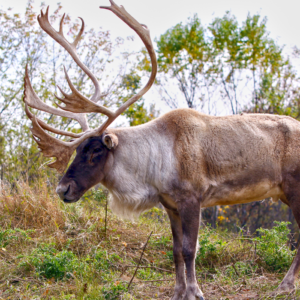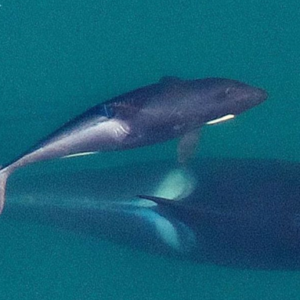Swimming with the Porbeagle Shark!
The Porbeagle shark is found in open seas in the Northern and Southern Hemisphere. In the North Atlantic, if you are anywhere from Newfoundland to New Jersey to Greenland and Russia, you might have the opportunity to witness one. But do not fear, the Porbeagle shark is known not to feed on other mammals, and is actually recognized for its playful behaviour!
what it eats!
The main diet of the Porbeagle shark consists of herring, lancetfish and mackerel. However, they do also dine on cod, redfish, haddock, squid and shellfish. Overall, their diet consists of pelagic (open sea) creatures. If you think you see a Porbeagle shark, look for its distinctive features. It has dark bluish-grey to bluish-black colouring on its back with white colour underneath. On its tail, it has a secondary keel underneath its longer primary keel. This shark has a stout head, with a pointed snout and large black eyes. Its teeth are small and smooth-edged narrow, with lateral cusps at the base of each tooth. But its most recognizable feature is the white spot at the base of the first dorsal fin.
where it lives
The Porbeagle shark joins the other species of sharks found in Canadian waters including the white shark, salmon shark, and shortfin mako. Different from other shark species’, the Porbeagle shark has to keep moving in order to breathe. It also has a heat regulating mechanism that keeps its body temperature 3 to 8°C above the surrounding water temperature. This shark is limited to where it can go, and so, it spends most of its time in waters between 8 and 13°C.
When not in the cooler waters, the mature female Porbeagle sharks migrate south to the seas between Cuba and Bermuda. It has also been seen near Brazil and Chile. It is in the warmer waters that the females pup, which occurs in late winter or early spring. Yet, their mating occurs in southern Newfoundland, in September to November. The Porbeagle shark prefers to remain in deep waters between 1,350 to 4,400 feet, but they often shift from shallow to deep, even being sighted in waters as shallow as 3.3 feet!
The female can produce between 1-5 pups, but generally it is only four that are between 60-75cm long at birth. The female Porbeagles reach sexual maturity at a size of 217 cm long (which they reach around 13 years of age), while males mature at 174 cm (8 years old). The adults can reach a size of over 3 meters (10-12 feet)! Usually, it is only between 1.5-1.8 m and 135 kg (298 lbs). They have a life expectancy of 30-40 years, with most Porbeagle sharks indicating growth rings in the vertebrae that indicate at least 26 years of age before death.
The biggest threat
The biggest threat that the shark is facing is overfishing, both by fishing on purpose and by accident. This makes the Porbeagle very likely to be caught as bycatch. Luckily, directed fishing has been suspended, which does provide some hope for this helpless shark, but they still continue to be caught as bycatch. When caught, fisheries have strict rules that they must be returned to the water in a way that is least harmful. Since the fishing of the Porbeagle shark was suspended in 2013, no licenses that have been issued since that year. The population has not been estimated since 2009, but it was estimated between 197,000 to 207,000 individuals, including approximately 10,000 to 14,000 spawning females.
The Porbeagles are very vulnerable to over-exploitation because they have a late age of maturity, and a small number of pups (average of 4 per litter). Sadly, the mortality rate for the Porbeagle shark is estimated at 100 tons per year (that is approximately 600-700 Porbeagle sharks per year). In addition to threats posed by fisheries, there are other human related threats. These threats include noise associated with offshore petroleum exploratory seismic surveys, and marine pollution.
This species is endangered, but there are things you can do to help!
- Learn about sharks to better understand them!
- Reduce purchasing shark products, anything from meat to oils (found in any beauty items and health nutrition)
- reduce your seafood consumption, this would also assist in stopping the accidental bycatch as seafood would be in less demand, so less fishing would occur.
- In order to reduce pollution, begin your ‘Reduce, Reuse, Recycle’ regime! You have the potential to make a difference.
- Lastly, share this with your friends and family so that can learn about this ‘playful shark’ that needs our help!



